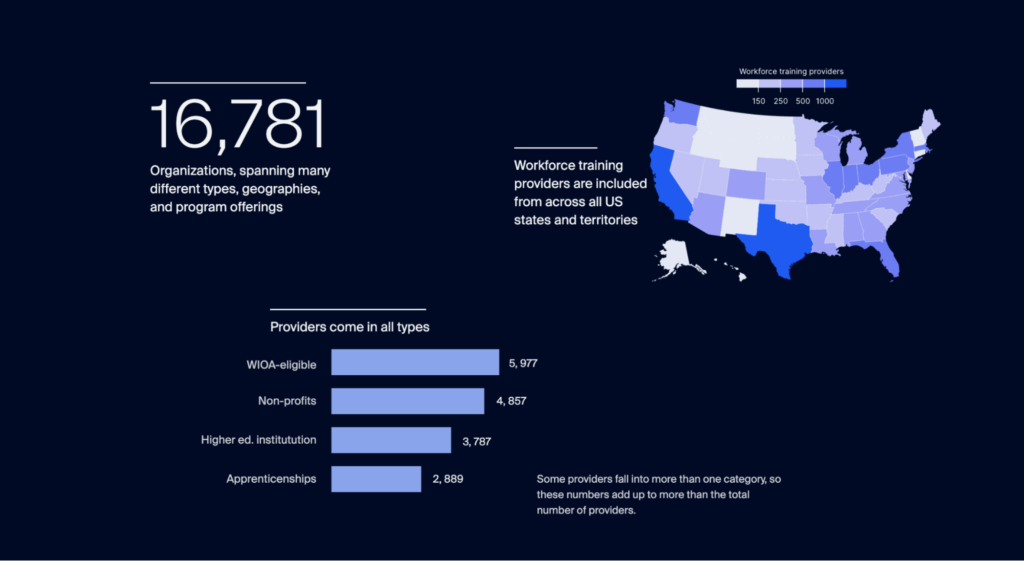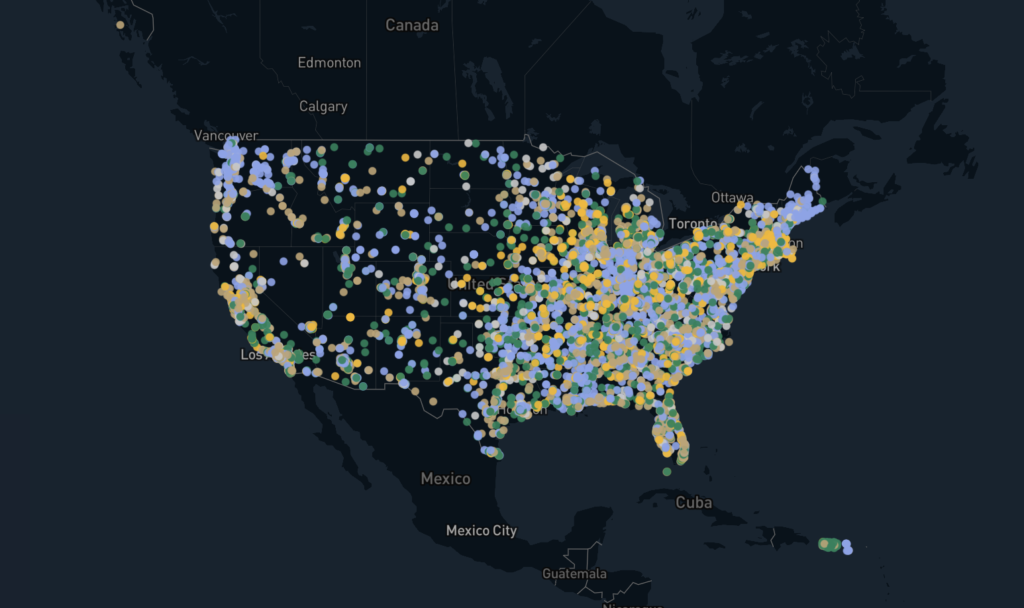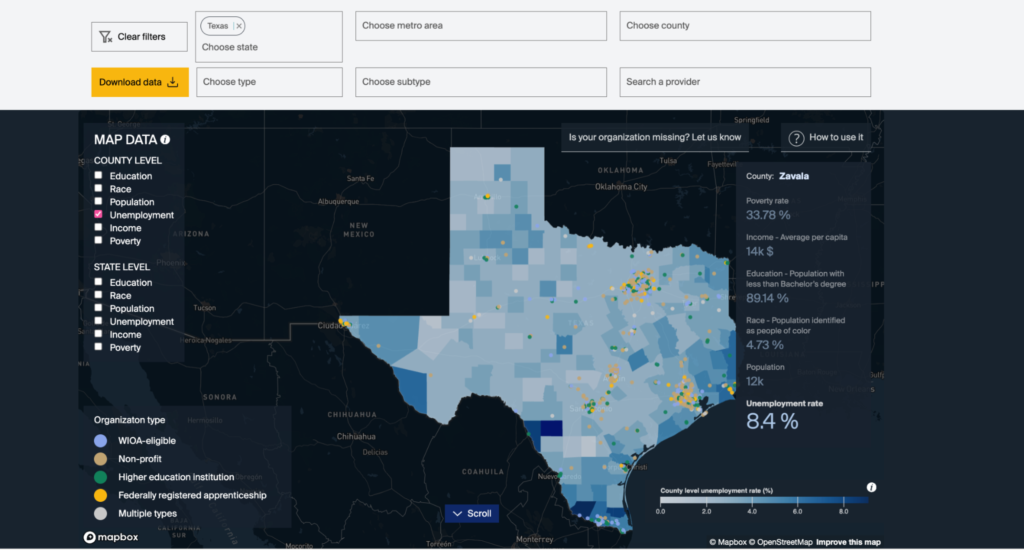 Insight Harvard’s Workforce Almanac Data Portal now in beta
Insight Harvard’s Workforce Almanac Data Portal now in beta
This month sees a major milestone in our ongoing collaboration with The Project on Workforce at Harvard University: the beta release of the Workforce Almanac Data Portal.

The interactive data portal is the first of its kind. In its first iteration, the Workforce Almanac maps almost 17,000 providers of workforce training across the US, defined as short-term, post-high school training opportunities in which learners can gain work-relevant skills to help them find a job.
Why now? American employers need to close relevant skills gaps, either through attracting newly trained talent or by reskilling/upskilling their existing workers. This new data portal unlocks the value of a system-level view of workforce training in the US. Crucially, it represents a missing piece of the skills-gap puzzle and a timely addition to the landscape of workforce development as it stands – and where it needs to be.
“There is a significant mismatch in the US between job openings and job seekers. Emerging technologies require new skills, and a more integrated approach to workforce training is required to better prepare the U.S. workforce now and in the future.”
– David Deming, Workforce Almanac Principal Investigator and Isabelle and Scott Black Professor of Political Economy at Harvard Kennedy School
Recentring workforce training provision on workers
The workforce training sector in the US is large but fragmented. Practitioners and researchers alike have struggled to understand the sector as a system that includes various types of providers and to identify their geographical spread across the country. As such, it has been difficult to gauge their ability to serve workers’ and employers’ needs and aspirations in an integrated manner.
“Nearly 70 million workers in the United States are skilled through routes other than a bachelor’s degree and potentially rely on the infrastructure of short-term, post-high school workforce training opportunities that the Workforce Almanac is mapping,” says Peter Blair, faculty co-chair of the Project on Workforce and advisor of the Workforce Almanac.

In response, the Workforce Almanac seeks to move the EdTech sector away from a siloed conception of workforce learning and development provision and towards a new, integrated idea of the sector with the worker at its heart.
For the first time, the portal brings together publicly available data from all US states on providers of workforce training lasting less than two years. In doing so, the data reveals important provision gaps and opportunities when it comes to workforce development.
In this way, the data portal will help training providers, workforce intermediaries and employers, as well as policymakers, in their efforts to allocate resources in an equitable way, addressing areas of highest need while preserving training quality and effectiveness.

As an example, users can compare workforce training providers against population demographics per state and county. In Maine, there are 32 providers per 100,000 workers; in Connecticut, this ratio falls to just 6 providers. The portal also highlights significant variations in the makeup of providers serving different regions. For instance, DC relies heavily on job training non-profits, whereas Massachusetts places greater emphasis on apprenticeships.
A data-led pathway to economic mobility and job equity
The Workforce Almanac data portal gives us an engaging, visual way of unlocking a more systemic view of fragmented, siloed US workforce training data and bringing it together in one place. The portal makes data accessible and explorable to users at all levels of data literacy. In turn, it tells an important skills training story that researchers, practitioners, educators and policymakers can instantly relate to:
– Training providers can gain insight into areas for development and visibility
– Policymakers can make more informed decisions around funding and resource allocation
– Employers can respond more effectively to their existing skills gaps through short-term training programmes.
– Researchers can form a more accurate picture of workforce training provision at the county, state and federal levels.

The Project on Workforce is an interdisciplinary, collaborative project between the Harvard Kennedy School’s Malcolm Wiener Center for Social Policy, the Harvard Business School’s Managing the Future of Work Project, and the Harvard Graduate School of Education. The Project produces and catalyses basic and applied research at the intersection of education and labour markets for leaders in business, education, and policy.
For more information on the Workforce Almanac project, read the working paper, The Workforce Almanac: A System-Level View of U.S. Workforce Training Providers, written by Alexis Gable, Tessa Forshaw, Rachel Lipson and Nathalie Gazzaneo.
